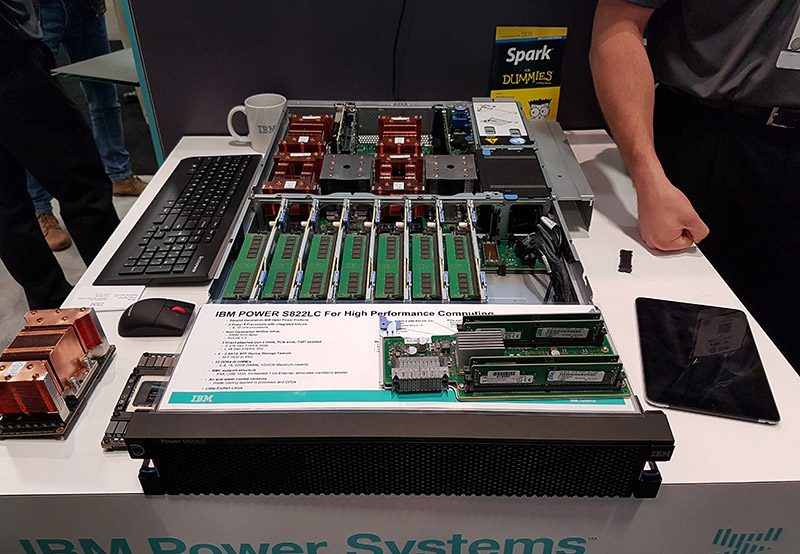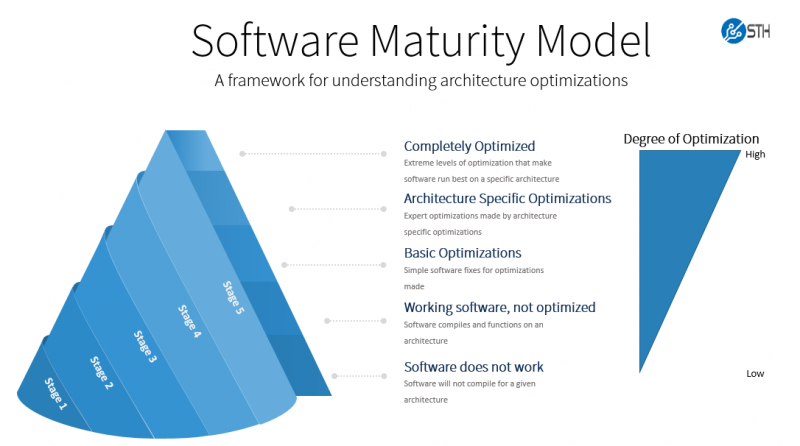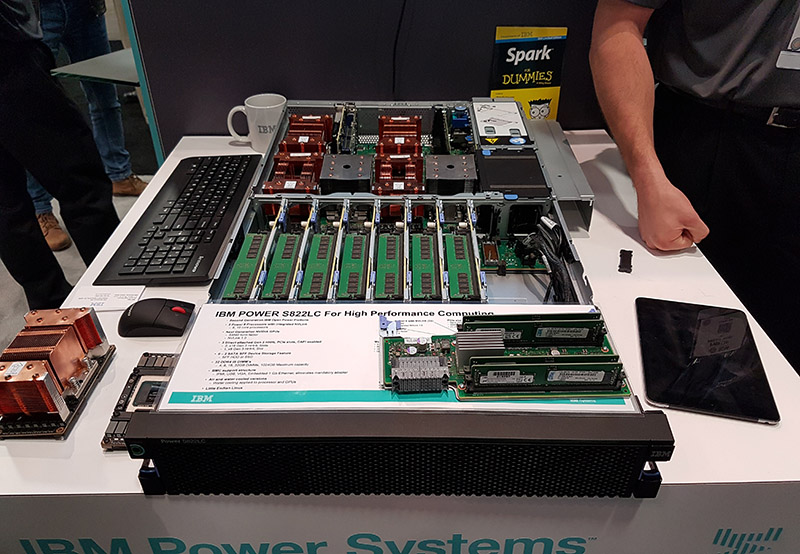The IBM POWER architecture is really interesting. While it has had a home in the high-end of the server market, in low volume, high dollar systems, it has not played in the general purpose market for several years. With the new OpenPOWER push as well as a push supporting NVLINK with NVIDIA GPUs as co-processors, there is a major push to bring Power to mainstream computing. We have a quick overview as part of our Trends in Server Compute 2017 series.
Push For Mainstream IBM POWER
We have already seen Power8 based systems that are approaching the higher-end of Intel Xeon pricing. For example, the IBM POWER S822LC is a system we saw at Supercomputing 2016 and it is clearly an entry point into the mainstream market, and with the ability to expand with 3rd party accelerators.

IBM is offering its platform as an Intel alternative for those who want to add NVIDIA Pascal P100 GPUs with NVLINK and technologies like CAPI. With Power9 we will have Bluelink and support for NVLINK 2.0 to launch alongside next-generation NVIDIA Volta parts. Power9 will bring significant architectural improvements, a shrink to 14nm process to help power consumption and core counts, as well as a really interesting scale out and scale up model segmentation.
IBM POWER9 is an important step but there will be challenges. For one, it will launch alongside both Intel Skylake-EP (which is already shipping to large customers) as well as lower-end chips from companies like Cavium. For 2017 we know most server software will support x86. The next question is whether developer effort will be put into Power8/ Power9 and ARMv8 compatibility. We published a maturity framework for software optimization which gives one an idea of the headwinds IBM faces:

Unlike on the ARM side, Power8 and Power9 are not wanting in raw performance. Instead, their challenge is to get enough systems out there to make the experience similar to an x86 system.
If IBM can move the general purpose software on Power to higher stages in the maturity model, or it can have success in being the platform for accelerators, then it stands the chance to become a big winner in 2017. IBM has already announced wins with Power9 and NVIDIA GPUs such as Oak Ridge National Labs’ Summit supercomputer so the platform may already be on its way.




